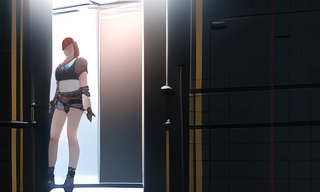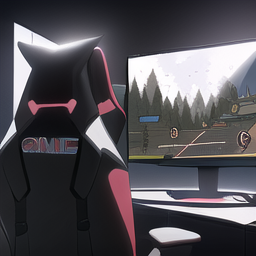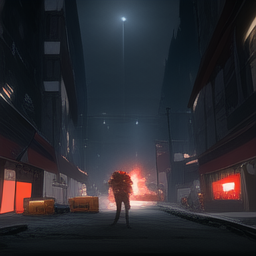Clothing Damages in Video Games
Clothing Damages in Video Games

In this post, I examine the damage caused by clothing items in video games and how they are portrayed to be harmful or harmless. This includes both male and female characters and also looks at various aspects of fashion throughout history that have been deemed inappropriate for a wide range of ages.
The discussion will cover the effect on society from such portrayals as well as the effects it has had on the gamer community itself. It is my hope that readers can gain an understanding of why some people feel so strongly about certain subjects when it comes to video game content. I encourage you all to leave your thoughts in the comments below.
If there’s anything else you’d like me to discuss regarding any topic related to video games, please let me know! As always, thank you for reading. 🙂
Introduction
In the early days of gaming, players often didn’t care much about what was happening to their characters, nor did many gamers ever take notice of the clothing worn by their favorite characters.
They were just pixels with simple outlines drawn around them, after all; no one could tell if a character had on pajamas or nothing at all unless they looked closely enough.
Even then, most would likely not pay attention to something as trivial as that.
However, things began to change during the 1990s. During that time, more emphasis was placed on making the world of gaming seem real through detailed graphics and the inclusion of life-like human models.
With these new additions came a greater sense of realism within the game worlds, which naturally meant that players needed to make the same adjustments in regards to their expectations and perceptions of what was realistic in the fictional worlds of video games.
For instance, the first person shooter genre started off quite differently than it does today, where each player assumed control over a single character and followed him or her throughout the entire game.
Players weren’t required to worry too much about whether or not their character wore clothes because there was little difference between being naked and wearing heavy armor anyway.
In fact, some even took it upon themselves to play the game while completely nude, though this wasn’t very common since it was considered bad etiquette and disrespectful towards others.
First changes
Things changed when developers began including clothing damages to gameplay mechanics. The earliest examples of such occurrences were found in the Sega Genesis title Soldier of Fortune II: Double Helix (1997), where players had to avoid obstacles by crouching behind cover, which usually included objects like crates and cars.
These objects became impassable once the user got near them due to their covering up the object underneath. Other titles, however, featured similar concepts without using objects, such as the action adventure game Tomb Raider III (2001).
While exploring tombs, Lara Croft had to jump over obstacles and climb ledges to progress, but she couldn’t do so while wearing any type of footwear.
She had to wear a pair of shoes until she reached the bottom of a staircase, whereupon they would be taken away and thrown aside. Similar situations were found in other popular games of the time, such as Shadow Warrior (1997) and Unreal Tournament (1999).
Damages indicators
However, it wasn’t long before developers began adding additional features to clothing damages, including the addition of damage indicators to show the player exactly how much damage had been done to his or her clothing item(s).
By doing so, players gained better insight into what the purpose of the feature was supposed to be, especially since they could now see the exact amount of harm their clothes were suffering. This helped increase the level of immersion felt by the player, as well as help reduce frustration, especially since players were able to identify the problem and fix it right away, instead of wasting valuable time trying to figure out what was causing it.
Of course, the addition of these damage indicators brought another issue to light. Namely, that many gamers didn’t understand why certain items of clothing should be considered harmful, while others weren’t. Many argued that there was no point in allowing players to remove their shirt in the middle of a mission only to have it get torn to shreds, only to replace it later on.
For example, players might find themselves fighting an enemy in a dark room with limited visibility. In such a scenario, removing one’s shirt would provide the player with better vision and allow him or her to react faster, thus improving the overall experience.
There are several reasons why developers decided to include clothing damages in video games.
First, many players enjoy dressing up their avatars with stylish clothing, accessories, and other personal belongings. Thus, developers included such options in order to satisfy those who wished to use them.
Second, some players simply liked playing the game while naked.
Third, developers wanted to make sure that the player’s clothing remained functional during combat, even if it took minor damage from enemies.
And lastly, there were some games that used clothing damages to add variety to the gameplay, such as the action adventure game Batman: Arkham Asylum (2009), which allowed players to choose from three different costumes, including Robin, Nightwing, and Batgirl.
Some developers, however, tried to introduce more subtle elements to the concept of clothing damages. Such was the case with the open world stealth game Hitman: Blood Money (2006), which featured two separate modes, including “casual” and “elite”.
Casual mode disallowed players from removing their clothing whenever they desired, while elite mode allowed them to do so. The former was intended for beginners while the latter was designed for experienced players. The choice was left entirely up to the player, which meant that he or she had to decide whether to take advantage of the option or not.
2000s ERA
Since the 2000s, clothing damages have become an integral part of the video game industry. There are still some developers who choose to omit the feature altogether, preferring to keep their games as realistic as possible.
However, there are also those who prefer having a more immersive gaming experience, which is why clothing damages remain in almost every major release.
Some games, such as Deus Ex: Human Revolution (2011), even went so far as to offer a customizability menu where players could alter the appearance of their avatar.
Furthermore, developers have made changes to the way clothing damages work over the years. For instance, the Mortal Kombat series introduced a system called Fatality Moves, where fatalities were performed on defeated opponents by ripping off their clothes.
Similarly, the Assassin’s Creed franchise has implemented a similar mechanic, albeit with less brutal results.
Modern ERA
The Witcher 3: Wild Hunt (2015) also had the ability to remove clothes, though the removal process was a bit clunky and required players to manually drag their clothes onto their body, rather than just selecting them from the inventory and clicking the appropriate button.
While clothing damages may be an important aspect of the gaming industry, it has its share of critics. Most notably, many people feel that such a mechanic is unnecessary and distracting.
To illustrate their point, some developers have released video clips showing how the game actually plays out, and what happens when clothing damages aren’t present.
One such example comes from the indie developer Yacht Club Games, whose popular simulation game Shovel Knight (2014) lacks any kind of clothing damages. Instead, the player’s clothes can easily be removed by dragging them to the ground, whereupon they vanish forever.
Another notable example comes from the sci-fi roleplaying game Mass Effect: Andromeda (2017), which features no damage indicator for the player’s suit. Instead, players need to inspect their avatar in third person view in order to determine whether or not their equipment is damaged.
Many other developers believe that the addition of such features makes the gameplay more realistic and helps improve immersion levels. On top of that, some players like seeing their character’s clothes get torn apart, while others like watching their characters fight in their underwear.
The latter isn’t very common, however, as it tends to make players uncomfortable. For this reason, most games either offer a small selection of default outfits for the player to choose from, or they allow players to customize their own avatars.
Despite the fact that clothing damages were initially perceived as useless, it doesn’t mean that they’re completely pointless. Quite the opposite, in fact, as many players enjoy them, and developers love adding them because it improves the immersion factor and makes players more invested in the world.
Conclusion
It was only a matter of time before clothing damages became commonplace within the gaming community. After all, it was one of the few ways developers could differentiate their games from the competition.
But there are those who dislike the feature because they feel that it distracts them and takes away from the realism, or that it’s just plain unnecessary.
Regardless of their opinion, however, it’s hard to deny the impact clothing damages have had on the industry over the past two decades, especially considering the way in which many modern releases utilize this particular gameplay element.
This concludes my article on clothing damages in video games. Thank you all for reading! I hope that you enjoyed the read, and if you have any questions or comments, please leave them in the comment section below.





I think this is a really good article. I have been working on a video game and the team I’m working with has come up with a mechanic similar. Our game is a side scrolling platformer game where the main character needs to collect keys and power ups and move to the next level/stage. The player can die by getting hit by a boulder, falling off a ledge, and other things. As soon as the player dies, their character gets a little bit bloody. However, unlike the games listed above, our game uses blood stains and not actual wounds. We thought that this would add a nice touch to the game and help us stand out.
Thanks again for writing such a great article!
Riley.
Hello. This is Krystal from the University of Alabama. I’ve been looking through your website and have found it extremely helpful. I was wondering if I could email you?
Thank you in advance.
Best regards,
– Krystal
Just want to say thanks for putting together such a detailed article on clothing damages. Your research and analysis was excellent, and the examples were perfect.